Related Research Articles

An electronic calculator is typically a portable electronic device used to perform calculations, ranging from basic arithmetic to complex mathematics.
Reverse Polish notation (RPN), also known as reverse Łukasiewicz notation, Polish postfix notation or simply postfix notation, is a mathematical notation in which operators follow their operands, in contrast to Polish notation (PN), in which operators precede their operands. It does not need any parentheses as long as each operator has a fixed number of operands. The description "Polish" refers to the nationality of logician Jan Łukasiewicz, who invented Polish notation in 1924.
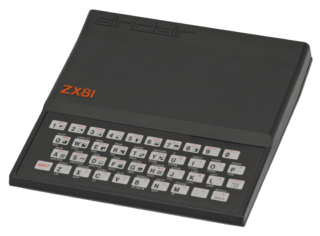
The ZX81 is a home computer that was produced by Sinclair Research and manufactured in Dundee, Scotland, by Timex Corporation. It was launched in the United Kingdom in March 1981 as the successor to Sinclair's ZX80 and designed to be a low-cost introduction to home computing for the general public. It was hugely successful; more than 1.5 million units were sold. In the United States it was initially sold as the ZX-81 under licence by Timex. Timex later produced its own versions of the ZX81: the Timex Sinclair 1000 and Timex Sinclair 1500. Unauthorized ZX81 clones were produced in several countries.

Sir Clive Marles Sinclair was an English entrepreneur and inventor, best known for being a pioneer in the computing industry and also as the founder of several companies that developed consumer electronics in the 1970s and early 1980s.
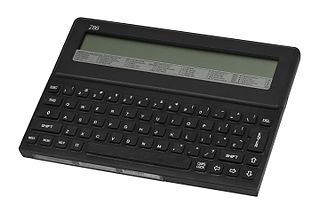
The Cambridge Z88 is a Zilog Z80-based portable computer released in 1987 by Cambridge Computer, the company formed for such purpose by Clive Sinclair. It was approximately A4 paper sized and lightweight at 0.9 kg (2.0 lb), running on four AA batteries for 20 hours of use.

The Sinclair Scientific calculator was a 12-function, pocket-sized scientific calculator introduced in 1974, dramatically undercutting in price other calculators available at the time. The Sinclair Scientific Programmable, released a year later, was advertised as the first budget programmable calculator.
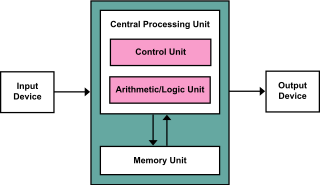
The von Neumann architecture—also known as the von Neumann model or Princeton architecture—is a computer architecture based on a 1945 description by John von Neumann, and by others, in the First Draft of a Report on the EDVAC. The document describes a design architecture for an electronic digital computer with these components:
Sinclair Radionics Ltd was a company founded by Sir Clive Sinclair in Cambridge, England and developed hi-fi products, radios, calculators and scientific instruments.

The Automatic Computing Engine (ACE) was a British early electronic serial stored-program computer design by Alan Turing. Turing completed the ambitious design in late 1945, having had experience in the years prior with the secret Colossus computer at Bletchley Park.
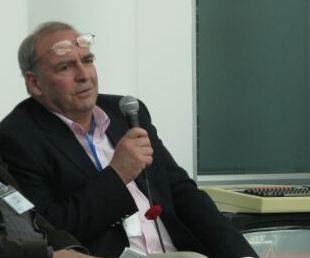
Christopher Curry is the co-founder of Acorn Computers, with Hermann Hauser and Andy Hopper. He became a millionaire as a result of Acorn's success.
Sinclair Research Ltd is a British consumer electronics company founded by Clive Sinclair in Cambridge. It was originally incorporated in 1973 as Westminster Mail Order Ltd, renamed Sinclair Instrument Ltd, then Science of Cambridge Ltd, then Sinclair Computers Ltd, and finally Sinclair Research Ltd. It remained dormant until 1976, when it was activated with the intention of continuing Sinclair's commercial work from his earlier company Sinclair Radionics, and adopted the name Sinclair Research in 1981.

The Grundy NewBrain was a microcomputer sold in the early 1980s by Grundy Business Systems Ltd of Teddington and Cambridge, England. A contemporary of the ZX80 and BBC Micro, the NewBrain was mostly used in business settings. It is notable for its chicklet keyboard and models that featured a one-line display in addition to television output. Another unique feature of the system was NewBrain BASIC, a BASIC programming language that featured an on-the-fly compiler.

The Sinclair Executive was the world's first "slimline" pocket calculator, and the first to be produced by Clive Sinclair's company Sinclair Radionics. Introduced in 1972, there were at least two different versions of the Sinclair Executive, with different keyboard markings, and another called the Sinclair Executive Memory, introduced in 1973.
Nigel Searle is the former managing director of Sinclair Research Ltd, and one of the company's longest-serving employees. He joined Sinclair Radionics in 1973, and for most of the 1970s, Searle worked for Sinclair in the United States to promote the company's calculators and other products. In 1977, with Sinclair in financial trouble, Searle left the company. He rejoined in 1979 when Sir Clive Sinclair formed Science of Cambridge and continued to work from the US, successfully promoting the ZX80 and ZX81 personal computers. In spring 1982, he moved back to the United Kingdom as Sinclair's managing director, a post he retained until 1986 when Amstrad took over the company's computer business.

The Sinclair Sovereign was a high-end calculator introduced by Clive Sinclair's company Sinclair Radionics in 1976. It was an attempt to escape from the unprofitable low end of the market, and one of the last calculators Sinclair produced. Made with a case of pressed steel that a variety of finishes, it cost between £30 and £60 at a time when other calculators could be purchased for under £5. A number of factors meant that the Sovereign was not a commercial success, including the cost, high import levies on components, competition from cheaper calculators manufactured abroad, and the development of more power-efficient designs using liquid-crystal displays. Though it came with a five-year guarantee, issues such as short battery life limited its usefulness. The company moved on to producing computers soon afterwards.
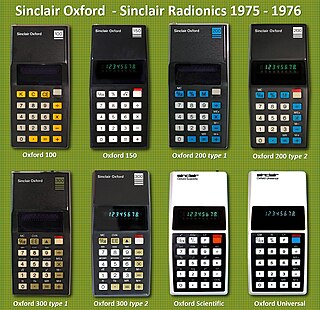
Sinclair Oxford was a range of low-cost scientific calculators manufactured and sold by Sinclair Radionics in England from 1975 until 1976.

The Sinclair Cambridge was a pocket-sized calculator introduced in August 1973 by Sinclair Radionics. It was available both as kit form kit to be assembled by the purchaser, or assembled prior to purchase. The range ultimately comprised seven models, the original "four-function" Cambridge, which carried out the four basic mathematical functions of addition, subtraction, multiplication, and division, being followed by the Cambridge Scientific, Cambridge Memory, two versions of Cambridge Memory %, Cambridge Scientific Programmable and Cambridge Universal.

Sir Bernard Walter Silverman, is a British statistician and former Anglican clergyman. He was Master of St Peter's College, Oxford, from 1 October 2003 to 31 December 2009. He is a member of the Statistics Department at Oxford University, and has also been attached to the Wellcome Trust Centre for Human Genetics, the Smith School of Enterprise and the Environment, and the Oxford-Man Institute of Quantitative Finance. He has been a member of the Council of Oxford University and of the Council of the Royal Society. He was briefly president of the Royal Statistical Society in January 2010, a position from which he stood down upon announcement of his appointment as Chief Scientific Advisor to the Home Office. He was awarded a Knighthood in the 2018 New Years Honours List, "For public service and services to Science".

The Sinclair President is a calculator released by Sinclair Radionics in early 1978. There were two models, the President and the President Scientific. They were among the last calculators produced by Sinclair, and their large size was in contrast to the smaller, earlier models, like the Sinclair Executive, which made the company famous. The President models were related to the Sporting Life SETTLER, a calculator designed specifically for betting shops.

The history of the personal computer as a mass-market consumer electronic device began with the microcomputer revolution of the 1970s. A personal computer is one intended for interactive individual use, as opposed to a mainframe computer where the end user's requests are filtered through operating staff, or a time-sharing system in which one large processor is shared by many individuals. After the development of the microprocessor, individual personal computers were low enough in cost that they eventually became affordable consumer goods. Early personal computers – generally called microcomputers – were sold often in electronic kit form and in limited numbers, and were of interest mostly to hobbyists and technicians.